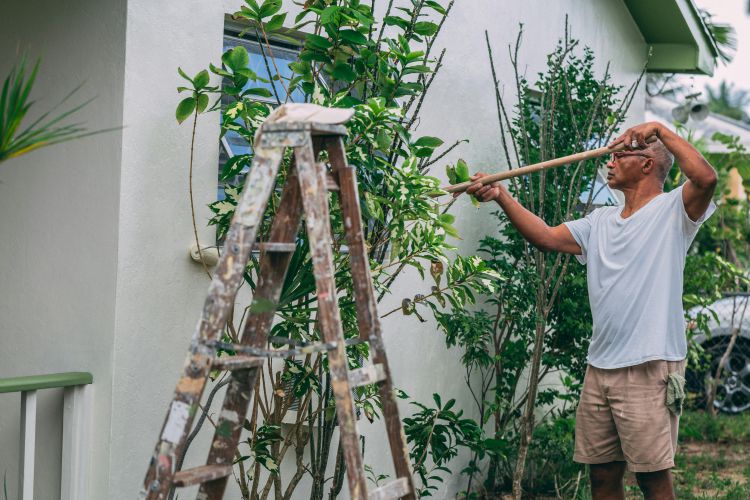Owning a home is a huge responsibility. It’s easy to focus on decorating and upgrades, but basic maintenance is just as important. Ignoring routine tasks can lead to expensive repairs. Small problems, like a leaky pipe or a clogged gutter, can quickly turn into major headaches if left unchecked.
A home maintenance checklist makes it easier to stay on track. Instead of waiting for things to break, regular upkeep helps prevent costly damage. This guide covers the essential tasks every homeowner should do throughout the year. By keeping up with these steps, you can avoid sudden repairs and keep your home in great shape for the long haul.
 Check Your Roof for Signs of Wear and Tear
Check Your Roof for Signs of Wear and Tear
Your roof protects your home from the elements, but over time, it can develop issues that lead to leaks and water damage. Damaged or missing shingles allow moisture to seep into the attic, leading to mold growth and weakened ceilings. Small problems, like curled or cracked shingles, may not seem serious at first, but they can quickly get worse if left unaddressed.
At least twice a year, take a walk around your home and check for visible signs of damage. If you notice dark spots, loose shingles, or sagging areas, it’s time for repairs. Inside the home, water stains on ceilings or walls can also indicate roof problems. If you’re unsure about your roof’s condition, consider scheduling a free roof inspection with a professional. Many roofing companies offer this service, helping homeowners catch potential issues early before they turn into costly repairs. Catching problems early can help you avoid expensive fixes down the road.
Service Your HVAC System Before Every Season
Your heating and cooling system keeps your home comfortable year-round, but it needs regular maintenance to run efficiently. A neglected HVAC system works harder, leading to higher energy bills and potential breakdowns. Dust and dirt buildup can also affect air quality, making allergies and respiratory issues worse.
To keep your system in good shape, replace the air filter every one to three months. A clogged filter reduces airflow and forces the unit to work harder. It’s also a good idea to schedule a professional tune-up before summer and winter. A technician will check for leaks, clean the coils, and ensure everything is running properly. Routine maintenance helps extend the lifespan of your system and prevents unexpected failures.
Seal Leaky Windows and Doors to Save on Energy Bills
Drafty windows and doors let warm air escape in the winter and cool air leak out in the summer. This forces your heating and cooling system to work harder, increasing your energy bills. Even small gaps around window frames and doorways can add up to significant energy loss over time.
To check for drafts, place a candle near the windows and doors. If the flame flickers, there’s a leak. Weatherstripping and caulking are simple fixes that can make a big difference. Apply weatherstripping around door frames and window sashes to seal gaps. Use caulk to fill cracks along the edges of windows. If your windows have condensation between the panes, the seals may be failing, and it could be time to replace them.
Inspect Plumbing for Leaks to Avoid Costly Repairs
Plumbing leaks may seem like a small issue, but they can lead to major water damage and high utility bills if not addressed early. Even a slow drip can waste gallons of water over time. Common areas where leaks occur include under sinks, around toilets, and near water heaters.
A good way to check for leaks is to inspect pipes for moisture or discoloration. If you see water pooling under a sink or hear dripping sounds when no faucets are on, there could be a hidden issue. Running toilets are another problem that can waste a lot of water. If you hear the toilet running long after flushing, check the flapper valve inside the tank. Replacing it is a quick and inexpensive fix.
If you notice low water pressure, it might be a sign of a pipe blockage or a leak somewhere in the system. Addressing small plumbing issues quickly prevents them from turning into expensive repairs later.
Deep Clean Dryer Vents to Reduce Fire Risks
Lint buildup in dryer vents is a serious fire hazard. Each year, thousands of house fires are caused by clogged vents. While cleaning the lint trap after each load helps, lint also accumulates in the vent hose and duct over time.
If clothes take longer than usual to dry or the dryer feels hot to the touch, it’s time for a vent cleaning. Disconnect the vent hose from the back of the dryer and remove trapped lint with a vacuum or vent brush. Make sure the outside vent flap opens properly and isn’t blocked by dirt or debris.
Regular maintenance not only keeps your home safe but also improves dryer efficiency, saving energy and reducing wear on your appliance. Cleaning the vent every few months keeps your dryer working properly and prevents overheating.
Check Your Basement and Foundation for Moisture Problems
A damp basement can lead to mold, mildew, and even structural damage. Checking for moisture regularly helps catch problems before they become serious.
Look for water stains, cracks in the walls, or musty smells, as these are signs of excess moisture. If you notice damp spots, using a dehumidifier can help reduce humidity levels. Checking the foundation for cracks and sealing them with waterproofing products helps prevent leaks.
Basements should also be checked after heavy rain to make sure water isn’t seeping in. If you notice pooling water or damp walls, it might be time to improve drainage around your home. Keeping gutters clean and ensuring downspouts direct water away from the foundation can prevent serious water damage.
Home maintenance is a year-round responsibility, but keeping up with these essential tasks makes it easier to manage. Taking care of small problems early prevents expensive repairs and keeps your home in great condition.
A well-maintained home isn’t just about avoiding repairs—it also improves energy efficiency, safety, and overall comfort. Regular upkeep ensures everything from your HVAC system to your foundation stays in top shape. By following this checklist, homeowners can stay ahead of issues and protect their investments for years to come.
